Wildlife tracking technologies have already massively advanced our understanding of the natural world, from uncovering previously mysterious migration patterns and key movement corridors to demonstrating the impacts of anthropogenic pressures and climate change. Recent advances in the development of technologies for collecting and transmitting biologging data have unlocked the potential for fine-scale data collection at a near-global scale, which when integrated with remotely sensed environmental data offers an unprecedented biological lens into ecosystem health and environmental change (Jetz et al. 2022).
New technologies on the horizon include small satellites like CubeSats, which are being investigated by NASA, the ICARUS Initiative's satellite system, and a variety of other ventures aiming to improve the coverage, accuracy, and capacity of wildlife tracking data collection. Combined with the increased availability of high-resolution environmental data and analytical developments in movement modeling, these advancements are empowering movement ecologists to ask previously unanswerable or unimaginable questions. It’s clear that this discipline sits at the precipice of major breakthroughs that could revolutionize our understanding of animal movement and the natural world.
- @Benedicta
- | She
My name is Ninying Benedicta a PhD student under the Department of wildlife resource management in Cameroon. I love learning about wildlife and their habitats. I also love working with communities surrounding the forests, learning on Traditional Ecological Knowledge.
- 0 Resources
- 4 Discussions
- 4 Groups
- @chmod000
- | he/they
I build sensing and perceiving hardware that is designed to address issues that matter to me. That ranges from assistive technologies, to conservation ecology, and connecting individuals with place and each other.
- 0 Resources
- 0 Discussions
- 7 Groups
- @CatherineJardine
- | She/Her
Birds Canada Data Science and Technology Team. Primarily working on Motus and NatureCounts.
- 0 Resources
- 0 Discussions
- 5 Groups
St. Lawrence University
Professor of Biology at St. Lawrence University
- 0 Resources
- 2 Discussions
- 13 Groups
- 0 Resources
- 0 Discussions
- 2 Groups
Swedish University of Agricultural Sciences
I study movement, behaviour and/or physiology using combine various sensors and tracking techniques. My focus is marine predators. However, my interest extends through the entire food web in all types of environment.
- 0 Resources
- 0 Discussions
- 7 Groups
- @EliThore
- | He/Him
Swedish University of Agricultural Sciences
I am a biologist with a broad interest in how the environment affects the behaviour and ecology of wildlife. I also like seeking creative and practical solutions to reduce our impact on the environment.
- 0 Resources
- 0 Discussions
- 5 Groups
- @Theresa
- | she/her/hers
- 0 Resources
- 0 Discussions
- 3 Groups
I am a budding engineer doing Electrical and Telecommunications Engineering and I am passionate about innovation and technology and how I can use it to make an impact in society.
- 0 Resources
- 0 Discussions
- 5 Groups
- @kategoodenough
- | she/hers
I am an ecologist focused upon waterbird conservation in the coastal environment.
- 0 Resources
- 0 Discussions
- 3 Groups
- @Gcharron
- | Mr.
Cofounder of Outreach Robotics, I have a master in mechanical engineering and I thrive on developing new technology for field scientists using remote controlled robots.
- 1 Resources
- 1 Discussions
- 4 Groups
M.A.P Scientific Services
Co-founder and Director of M.A.P Scientific Services, South Africa
- 0 Resources
- 0 Discussions
- 8 Groups
Careers
The Smithsonian National Zoo & Conservation Biology Institute is seeking a Program Manager to help coordinate multiple organizations in an effort to integrate movement data & camera trap data with global...
22 April 2024
The Smithsonian National Zoo & Conservation Biology Institute is seeking a Postdoctoral Research Fellow to help us integrate movement data & camera trap data with global conservation policy.
22 April 2024
Article
You’re invited to the WILDLABS Variety Hour, a monthly event that connects you to conservation tech's most exciting projects, research, and ideas. We can't wait to bring you a whole new season of speakers and...
22 March 2024
Hussey Labs seeks a senior post-doctoral researcher/senior research associate for movement ecology of Greenland halibut in the context of fisheries management across Baffin Bay-Davis Strait, Eastern Canadian Arctic.
13 March 2024
Catch up on the conservation tech discussions and events that happened during World Wildlife Day 2024!
7 March 2024
more affordable pricing for our software for the visualization and annotation of GPS and acceleration data
4 March 2024
Careers
Seeking a doctoral student to join the Move.inFormation research group in an exciting new project investigating the use of social information for optimal movement in the Andean condor.
12 February 2024
Research topic: Pathogens and predators represent the ultimate and ubiquitous threats to fitness. One of the defense counter-strategies is behavioural avoidance of the cues of infection risk (disgust) and predation risk...
10 February 2024
The primary focus of the research is to explore how red deer movements, space use, habitat selection and foraging behaviour change during the wolf recolonization process.
10 February 2024
The Wildlife Restoration Foundation is hiring a Conservation Technology Intern
8 February 2024
In the last article of my series examining how people find biologging tech for their projects, I spoke with Annkathrin Sharp, a Programme Officer at Fauna & Flora about how her experience choosing DIY Biologgers to...
14 December 2023
In the penultimate article in my series examining how people find biologging tech for their projects, I spoke with Matthew Stanton about developing custom biologging technology for studying koala behaviour.
7 December 2023
June 2024
event
May 2023
event
April 2023
February 2023
| Description | Activity | Replies | Groups | Updated |
|---|---|---|---|---|
| I am working on that too haha. So in my design you load the glue gun with two part Loctite, it has two separate metal rings. Glue and hardener in each ring. Then each ring has a... |
+23
|
Biologging | 2 days 6 hours ago | |
| Hello @CourtneyShuert If I am not mistaken, Wildlife Computers was developing or has developed a remote release package for such an application as has a much smaller company... |
|
Biologging, Marine Conservation | 5 days 2 hours ago | |
| I'll find you some. Just organising all of our stock of these. |
+9
|
Biologging | 5 days 8 hours ago | |
| Hi everyone, @craig joined last month's Variety Hour to chat about Tagranger, which you can read more about here. A TagRanger®... |
|
Biologging, Connectivity, Sensors | 1 week ago | |
| 'Most importantly, we have to make it play a MIDI version of the DoctorWho theme song when you arm the device. That has to be the #1 feature if you ask me!' Seconded! |
+9
|
Acoustics, Biologging, Emerging Tech, Open Source Solutions, Sensors | 1 week 1 day ago | |
| Might very well be so! I highly encourage you to take up the challenge! |
+23
|
Biologging | 1 week 4 days ago | |
| This is so cool @Mauricio_Akmentins - congrats and look forward to seeing your project evolve! |
|
Acoustics, Biologging, Climate Change, Conservation Tech Training and Education, Data management and processing tools, Emerging Tech, Open Source Solutions, Protected Area Management Tools, Sensors, Software and Mobile Apps | 2 weeks 3 days ago | |
| You mention you're working with an engineer, here are a couple of pointers:with an SDR (the "digital USB receivers" you mention) you can scan some bandwidth to detect radio pulses... |
|
Biologging, Build Your Own Data Logger Community | 2 weeks 6 days ago | |
| Hello everyone, I'm interested in gathering insights on how the behavior of different species impacts the development and efficacy of... |
|
Biologging, Acoustics, Camera Traps, eDNA & Genomics, Emerging Tech, Marine Conservation | 1 month ago | |
| Hello Peter, Have you find a solution ? I will be happy to discuss with you about your project and field challenges ? Best,Virginie |
+26
|
Biologging | 1 month ago | |
| Thank you Carly, I will definitely take a look. |
|
Acoustics, Biologging, Climate Change, Conservation Tech Training and Education, Data management and processing tools, Remote Sensing & GIS, Software and Mobile Apps | 1 month ago | |
| Hi all, I am searching for marine species projects that monitor orientation/IMU and/or acceleration data... |
|
Biologging, Marine Conservation | 1 month 1 week ago |
Get To Know FIT
6 May 2020 12:00am
Era of the Condor: A Species' Future in Recovery
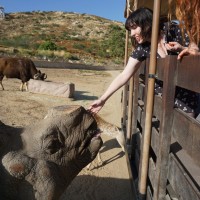 Ellie Warren
Ellie Warren
5 May 2020 12:00am
Talking Tracking with Xerius
 Ellie Warren
Ellie Warren
23 April 2020 12:00am
WILDLABS Tech Hub: WWF PandaSat
13 April 2020 12:00am
WILDLABS Community Call Recording: Rainforest X-PRIZE
30 March 2020 12:00am
Online Workshop: Conservation Technology
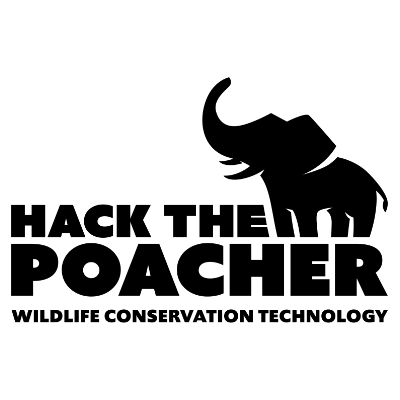 Hack the Poacher
Hack the Poacher
23 March 2020 12:00am
Enter the Zooniverse: Try Citizen Science for Yourself!
 Ellie Warren
Ellie Warren
18 March 2020 12:00am
OpenCollar Update 1
6 March 2019 12:05pm
19 April 2019 7:55am
also, we noticed our BoM was missing from GitHub, so we've added it now: https://github.com/Wild-Spy/OpenDrop/blob/master/Documentation/OpenDrop_BOM.xls
5 March 2020 4:44am
the drop off paper
https://besjournals.onlinelibrary.wiley.com/doi/10.1111/2041-210X.13231
Accepting Applications: ArcGIS Solutions for Protected Area Management
 esri
esri
4 March 2020 12:00am
#Tech4Wildlife 2020 Photo Challenge In Review
4 March 2020 12:00am
Call for Nominations: Tusk Conservation Awards
 Tusk
Tusk
3 March 2020 12:00am
Open-Source Argos Developer's Kit / Tag
2 March 2020 10:27pm
How to add a salt water switch
28 February 2020 4:52pm
Hawai'i Conservation Conference
 Hawaiʻi Conservation Alliance
Hawaiʻi Conservation Alliance
28 February 2020 12:00am
Animove Summer School 2020
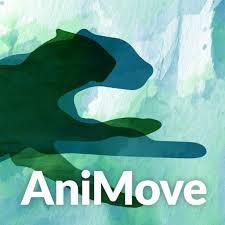 AniMove
AniMove
13 February 2020 12:00am
Curious about radio-tracking with drones?
29 January 2020 3:44am
31 January 2020 8:26am
Hello Laura,
Thanks for the detailed response. It sounds like a very interesting use of drone technology.
Many thanks,
Mark
12 February 2020 1:50pm
Hi,
Does your system work with normal VHF tags or do you make a custom tag for use in your system?
Does the drone have to be piloted manually in a particular path or pattern in order to acquire the tags?
Or can your receiver be placed on say a fixed-wing high speed drone programmed to fly a lawn mower pattern to cover the maximum amount of area?
I'm also curious how you are doing the direction finding, since there are no visible antennas, but I understand if you'd rather not talk about this (c:
Interesting work, thanks.
-harold
12 February 2020 9:33pm
Thanks for asking Harold,
We work with any off the shelf VHF tag, you can use tags already in the field or you can order tags from any of the manufactureres, just have to be VHF of in the case of satelite or GPS tags have a VHF componment.
The drone is piloted manually, you can see the tag locations on the base station in real time you can reposition the drone to avoid terrain challanges to get the best results.
We cover a lot of ground, I can do the math, flight patterns really come down to the application you are looking at animal being tracked ect, happy to discuss specifics further at you convenience.
We have videos of our work on out youtube channel
https://www.youtube.com/channel/UCj1pcEJHkEPCy94AlT0U7HQ
The oringinal research papers are on researchgate
https://www.researchgate.net/profile/Debbie_Saunders
You can book a virtual demo with me, I'd love to hear about your work and ideas. It would be great to give you a run through of the solution, flight patterns and user interface.
https://www.wildlifedrones.net/book-demo/
Robert
Wildlifedrones
+61 491 625 411
Number of radio collared animals?
9 December 2019 7:27pm
4 January 2020 10:58pm
There are over 7000 tracked animals via Argos alone (monthly). More info here - http://www.argos-system.org/applications-argos/wildlife-monitoring/
5 January 2020 10:49am
Thanks Alasdair
So there are low double figure thousands just with the various services of satellite collars. Then surely high tens of thousands, maybe low hundreds of thousands with terrestrial GPS and conventional VHF.
Radio telemetry
4 June 2019 4:39pm
5 June 2019 11:33am
Hi Helen,
Two suggestions coming through over twitter:
A good start is to reduce your reciever's gain as far as possible.
Hopefully you can snuff out the antenna's rear lobe that way. Headphones really help there too. https://t.co/9Eg4gpHVly
— Faunatech Austbat (@FtechAustbat) June 5, 2019
sometimes it helps to put your body behind the antenna at about waist height. Does that make sense?
— Rob Appleby (@wildspyrob) June 4, 2019
Steph
18 December 2019 4:00am
Hi Helen, what tags are you using? Position on the animal and what species?
24 December 2019 5:07pm
HI there,
Biotrack combined Avian GPS SOB tag & PicoPip AG317 Tag on the back of Hawfinch.
H
WILDLABS Virtual Meetup Recording: Drones
9 November 2019 12:00am
Studying pangolin ecology
16 April 2019 3:59pm
21 October 2019 3:26pm
Hi all, many thanks for the information.
21 October 2019 11:42pm
Hi all,
Great to see this post continue to mature. Some good news for you all. Arribada has finished developing a lower cost open source Argos ARTIC R2 transmitter design with our development partners Icoteq for a National Geographic project. All thanks to @ThomasGray_Argos who originally gifted us 3 R2 development chips to work on an open reference design.
It's compatible with the Arribada Horizon GPS tracker, or cellular module if both are required in one device / unit. We'll look to integrate one of the LoRa radios from the Open Collar initiative too to create a comprehensive open solution that can be tweaked to form a viable pangolin tracker based on the attachment and epoxy designs above (thanks for the paper @Robin+Poches , great research).
However, first up is Bangladesh for some open ocean plastics tracking.
More info here for now - https://www.icoteq.com/icoteqs-argos-satellite-transceiver-now-certified-by-cls/
Cheers,
Alasdair
22 October 2019 3:40pm
Fantastic news, Alasdair. Indeed timely. I was wondering what the finiancial impliation for one unit will be? A price range will suffice. Thanks.
C
Wearable Tech Lions - Current Projects
17 October 2019 10:23am
18 October 2019 3:45am
Hi Natalie,
Interesting request. I may be able to help and am working in this area in Australia to track both native and introduced species. Would you please enlighten me with more specific objectives, location, duration and quantity.
Thanks.
Using Artificial Intelligence to Track Birds’ Dark-of-Night Migrations
 University of Massachusetts Amherst
University of Massachusetts Amherst
9 October 2019 12:00am
Looking for opportunity to visit conservationists in Uganda
3 October 2019 2:19pm
Technology lab focused on wildlife protection opens on Ol Pejeta Conservancy
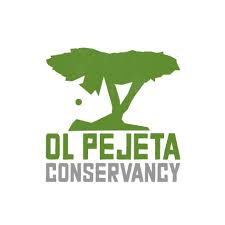 Ol Pejeta Conservancy
Ol Pejeta Conservancy
31 May 2019 12:00am
Technology for Wildlife and the Looming Spectre of E-Waste
 Laure Joanny
Laure Joanny
3 May 2019 12:00am
9-axis sensors for tracking tiny animals
14 April 2019 12:19am
14 April 2019 7:02pm
Thanks Harold for the clarification on the accuracy of the sensor! Sounds like this isn't where it needs to be for accurate location tracking. I live just down the streen from Diginal Naturalism Labs, Andy is wonderful. Right now I have a network of 20 feeders all over our town which read implanted RFID's of visiting hummingbirds. Our thought was that maybe we could use a temporary glue to attach one of these to the back of a bird, and knowing the exact feeder location and time would allow us to calculate the amount of drift. If feeders were visited often the could be used as recallibration points to reset drift.
Anyways, thank you again for the input. Even if the location tracking aspect doesn't work, tracking the levels of activity would be super interesting! I'll probably start with that :).
14 April 2019 11:53pm
Hi jjinsing,
You could take the 9 axis LSM9DS1 sensor from the Horizon tag (open source) + firmware and build a custom module. Your limitation will be the coin cell battery and switching to a smaller microcontroller to get the size and weight down. What's the weight of the hummingbirds? 11g odd?
There is a tarantular tracking project that requires a similar sized tag (bluetooth base stations to track), so if that gets built you could inherit that in the future. Htarold is correct in that actual location will need a local rfid / base station at the feeding station to know where they are and you'd be looking at behavioural and energetics logged to flash etc.
Cheers,
Alasdair
15 April 2019 2:36am
Hi Jay, Alastair,
Small world! You've got a great resource at your doorstep then (c:
Your idea of tracking the birds between known feeding locations is a good one, and it's made use of here. But I don't know if the drift will cooperate over that long a period. A colleague who looked into cheap accelerometers for navigation told me it doesn't work after 10 seconds or so. But this was some years ago and things may have improved. It might be possible to detect when a bird is stationary, to zero the device. This is like when a fireman puts his foot down in the above case.
Thanks,
-harold
Update on Arribada's Low Cost Open Source Sea Turtle Tag
 Rachael Kemp
Rachael Kemp
12 March 2019 12:00am
#Tech4Wildlife Photo Challenge: Our Favourites from 2019
3 March 2019 12:00am
The OpenCollar Initiative
21 February 2019 12:57pm
OpenCollar for wildlife monitoring launches at The Things Conference
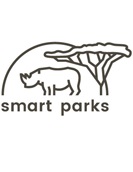 Smart Parks
Smart Parks
6 February 2019 12:00am

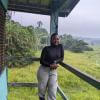








































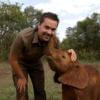

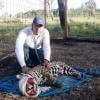


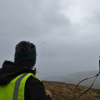




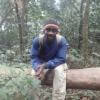

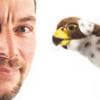
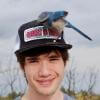
18 April 2019 3:51pm
Hi Jackson,
Attached a few images showing how we attach the koala drop-off to collar material. The first shows the bare nichrome-acrylic plate with the nylon line in-situ. There's also a picture of an actual koala drop-off with the line exiting the plate. Lastly, the triple overhand knots (repeated so the knots are doubled over and secure) tying the line through the collar material. Normally, we hide the nylon by splicing the collar material in half, tying the knots, and then gluing the collar material back together so no nylon is exposed.
Does all that make sense? Any questions just let me know.
Cheers,
Rob